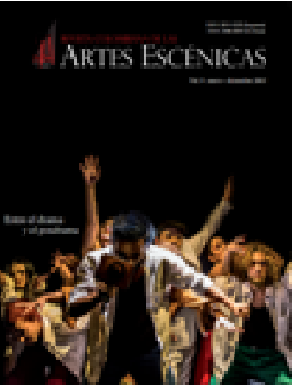Authors
Abstract
This article presents the results of a research process conducted from an interest between theater and neuroscience where the process of perception can justify post-dramatic theater. This research aims to find the source of artistic renewal produced in theater since the seventies and that has placed an imbalance in the different scenic languages. From the stimuli that are generated and how these are projected on staging, gives cause for a detailed study of the brain functions in relation to the theatrical events that trigger them.
References
http://contextosacademicos.org/spanish/files/El%20arte%20es%20una%20expresion%20del%20cerebro%20que%20se%20utiliza%20para%20comunicar_%20Llinas.pdf
Cornago, Ó. (2006). Teatro postdramático:las resistencias de la representación. Revista Artea, 165-179.
Jiménez, V. (2014, 5 de octubre). Entrevista. Peter Brook: “El teatro es un cerebro compartido”. El País. Recuperado de http://cultura.elpais.com/cultura/2014/10/04/actualidad/1412421885_218346.html
Punset, E. (2008, 5 de mayo). El cerebro, teatro de las emociones. Recuperado de http://www.eduardpunset.es/419/charlas-con/el-cerebroteatro-de-las-emociones
Ratey, J.J. (2003). El cerebro: manual de instrucciones. Barcelona: Random House Mondadori.
Revista Teatros. (2014, 31 de octubre).Entrevista. Tomaz Pandur. Obra: Fausto.Recuperado de http://revistateatros.es/entrevistas/tomaz-pandur_731/
Saboya, M. (s.f.). Teatro posdramático y performance. Recuperado de https://mariasaboya.files.wordpress.com/2012/05/teatro-posdramc3a1tico-y-performance.pdf

 PDF (Español)
PDF (Español)
 FLIP
FLIP









